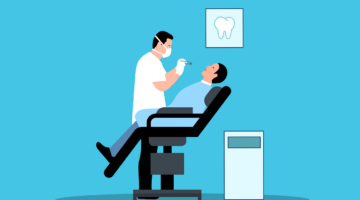
On November 1st, CMS announced several new billing codes to incentivize the use of technology to engage with patients at home when it released the final Medicare Physician Fee Schedule for 2019. The rule includes additional amendments designed to accelerate the use of virtual check-ins and Remote Patient Monitoring (RPM) RPM in the market.
The decision to expand reimbursement for providers for the use of communication technology-based services recognizes the important role these services play in increasing patient engagement and reducing unnecessary costs. These policy updates signal that CMS is moving quickly to incentivize the integration of innovative technologies as it pushes for the transition to value-based care.

Navigating The Right Steps For Your Healthcare Startup
This webinar will explore how a banking platform approach could be the resource for your company.
As CMS explained earlier this year, “Medicare will start paying for virtual check-ins, meaning patients can connect with their doctor by phone or video chat,” said Seema Verma, CMS Administrator. “Many times this type of check-in will resolve patient concerns in a convenient manner that gets them the care that they need and avoids unnecessary cost to the system. This is a big issue for our elderly and disabled populations where transportation can be a burden to care as well as to caregivers. We’re not intending to replace office visits but rather to augment them and provide new access points for patients.”
I applaud CMS’s recognition that virtual check-ins and RPM services can be a significant part of ongoing medical care. The fact of the matter is that most care happens outside the four walls of the hospital or clinic. Daily digital engagement empowers patients to take an active role in their health and allows providers to detect problems early before costs and complications escalate.
On its surface, I’d say that the new Final Rule is good but not great. It advances the ways in which physicians can get paid for using technology in their practices but barriers remain that could thwart mass scale adoption. Let’s dive into some of the details.
The new codes, which take effect on January 1, 2019, more accurately reflect the way healthcare services are provided today. Here are some highlights of the new codes:
HCPCS Code G2012 Brief communication technology-based service
Providers can now be reimbursed for addressing a question or concern from a patient via virtual check-in to assess whether an office visit is needed. Each time that a provider conducts a virtual check-in with their patient, they’ll be able to bill this code which will be reimbursed at about $10 per event. On the positive side of the ledger, CMS is imposing no unnecessary frequency limitations that would require providers to limit the availability of these services for their patients.
However, CMS beneficiaries will still have to pay their out-of-pocket portion of the expense, which means patients could receive a bill for $2 for each interaction. I question the wisdom of this choice as it could create unnecessary barriers for patients seeking care. Furthermore, CMS has imposed time restrictions that these cannot be billed in the seven days following an in-person visit or within 24 hours of another in-person visit. This further seems like a limitation on impact for providers and patients that won’t necessarily benefit patients, doctors or the total cost of care.
The bottom line: Physicians and other qualified health providers can make more money to support the work their doing to support patients outside of the exam room. This is a win for patients and doctors.
HCPCS Code G2010 Remote evaluation of recorded video and/or images submitted by an established patient
When patients use their smartphones to upload photos/videos of symptoms, physicians can now get paid for the evaluation of these. Once again, this code is restricted to established patients and has the same ‘blackout’ periods as G2012. Patients will also be responsible for their co-payment.
CPT Code 99457 Chronic care remote physiologic monitoring treatment management services, 20 minutes or more
CMS has made good on their pledge to allow clinical staff time to contribute to remote patient monitoring. Further, they have lowered the timeframe from 30 minutes to 20 minutes per patient per month. This is a great step to further increase the likelihood that providers will take advantage of RPM capabilities to monitor their patients.
This new code should make it easier and less onerous to bring RPM to the patients who need it by requiring less time on RPM activities per calendar month, offering separate payment for time spent onboarding a new patient to the platform, and allowing clinical staff to deliver RPM services.
Increased reimbursement supports meaningful patient engagement
With the shift toward value-based reimbursement already underway, this latest change signals CMS’s recognition of virtual check-in and RPM technology as a fundamental component of cost-effective, high-quality care.
I’m pleased to see clinicians we work with every day get even greater compensation for the high-quality services they’re delivering to patients. Now that CMS will reimburse providers for the use of these technologies, we expect to see an acceleration of these tools reaching the marketplace, which will lead to better care.
CMS’s decision to include payment codes for virtual check-ins, asynchronous video and image review, and remote physiologic monitoring in the Final Rule allows providers to more meaningfully use these remote patient monitoring technologies. We hope commercial payers follow CMS’s lead because all patients deserve access to RPM innovations.
Todd Johnson, CEO of HealthLoop, has a long history in the healthcare technology space and is a serial entrepreneur committed to building innovative products that engage patients and connect them to their care team. Todd joined HealthLoop in 2012 as CEO to develop an automated way patients can check in with their providers. Under Todd’s direction the company is now implemented at over 40 health systems and physician practices including prestigious institutions like Cedars Sinai and UCSF.
Prior to joining HealthLoop, Todd was the founder and CEO of Salar, Inc – a Baltimore, MD based provider of acute care physician charge capture and documentation solution. Working with the nation’s leading medical centers and physicians, Todd grew Salar to a successful acquisition in 2011.
This post appears through the MedCity Influencers program. Anyone can publish their perspective on business and innovation in healthcare on MedCity News through MedCity Influencers. Click here to find out how.








